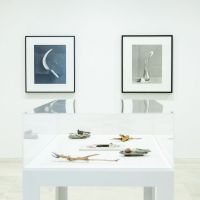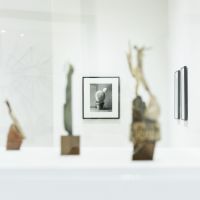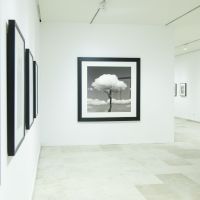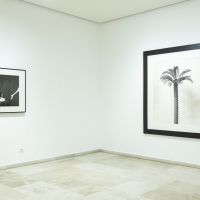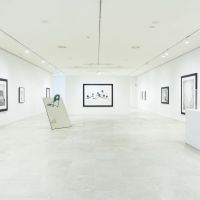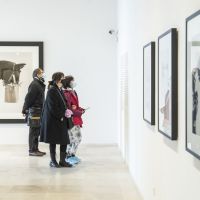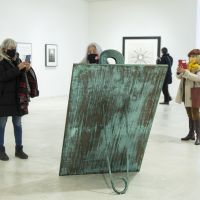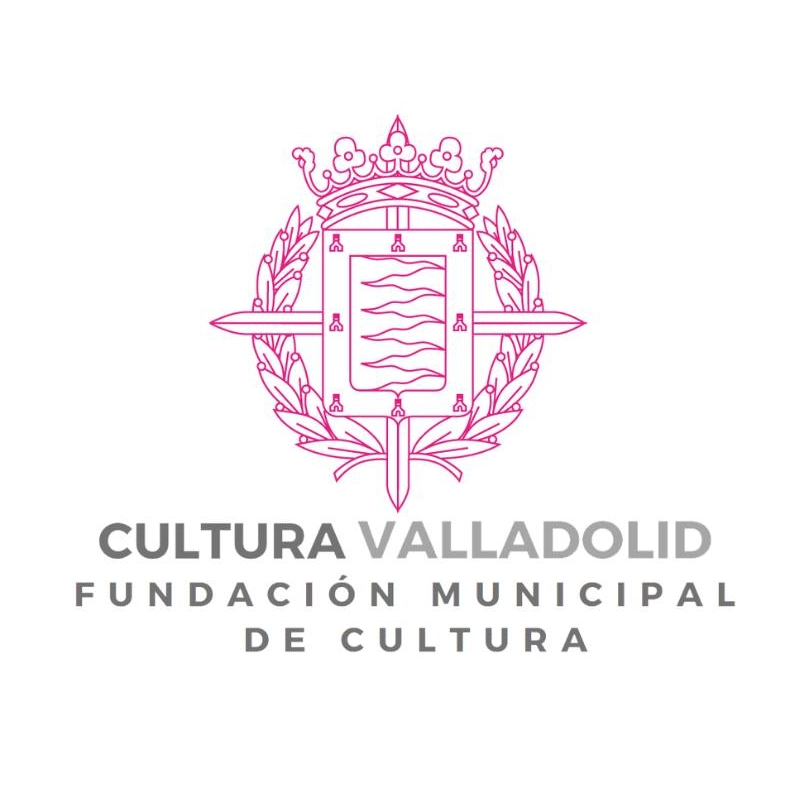CHEMA MADOZ
La naturaleza de las cosas y su eco en la colecciÃģn
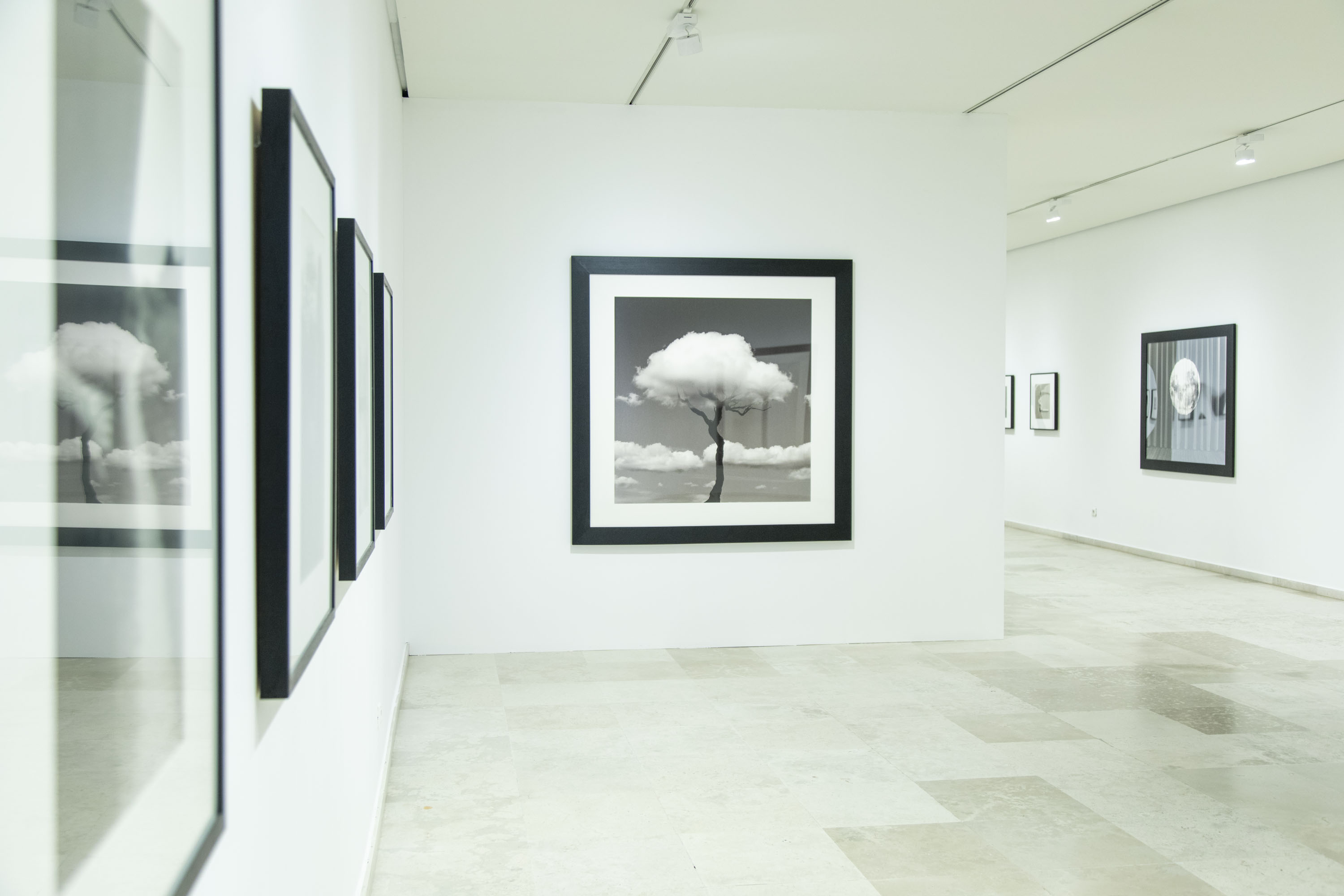
[English version below]
"Ajeno a las clasificaciones habituales, Chema Madoz subvierte las reglas de la naturaleza, dejando vagar su imaginaciÃģn. Despliega su fantasÃa y funde los reinos animal, vegetal y mineral, dando lugar a un reino propio en el que transforma hojas, ramas, nubes, maderas, plantas, flores, piedrasâĶ ofreciendo las combinaciones mÃĄs inesperadas.
Unas veces lo hace cambiando la funciÃģn de los elementos de la naturaleza, como cuando una pareja de guindas simulan los pesos de una balanza o las mariposas se convierten en las flores de un jarrÃģn. Otras haciendo asociaciones insÃģlitas, como cuando las hileras de caligrafÃa japonesa se convierten en las ramas colgantes de un sauce llorÃģn, o las nubes en la copa de un ÃĄrbol. En otras, juega con la semejanza, como cuando asocia las hojas de la planta denominada comÚnmente costilla de AdÃĄn y una mano con los dedos desplegados.
Chema Madoz se complace en trastocar la realidad, porque a pesar de su apariencia sÃģlida e inalterable, una mÃnima variaciÃģn puede hacernos conscientes de la fragilidad de aquello que nos rodea. A lo largo de los aÃąos, esas variaciones introducidas en los objetos âun campo fÃĐrtil e inagotable para el artistaâ nos han hecho ver otras realidades, han expandido nuestro conocimiento e incluso nos han hecho esbozar una sonrisa al identificar o intuir sus mecanismos, porque, como ÃĐl mismo seÃąala, ÂŦtoda manipulaciÃģn estÃĄ a la vista del espectadorÂŧ. De ahà que sus imÃĄgenes nos resulten extraÃąas en un primer momento, pero familiares y fÃĄcilmente identificables en cuanto detenemos nuestra mirada en ellas y reconocemos sus juegos, sus guiÃąos, sus combinaciones, sus alteraciones. Con Chema Madoz nos convertimos en espectadores activos de su obra, en cÃģmplices cuando opera en nuestra mente el mismo mecanismo que le ha llevado a ÃĐl a darle la vuelta al significado habitual y utilitario del objeto.
Pero a lo largo de su carrera, Chema Madoz no solo ha trabajado con el objeto. Una mirada atenta nos hace descubrir la gran importancia que cobra la naturaleza en su trabajo y la cantidad de obras que le ha inspirado. Ahora bien, el artista opera con los elementos de la naturaleza de la misma manera en que lo hace con los objetos, buscando asociaciones, parentescos y encuentros fortuitos, realizando pequeÃąos desplazamientos, combinaciones, yuxtaposiciones, metamorfoseÃĄndolos.
Hay imÃĄgenes sumamente evocadoras, como la de las notas musicales que penden de las ramas desnudas de un ÃĄrbol o el paisaje de montaÃąas arenosas que transporta una maleta. Pero en sus manos, la naturaleza tambiÃĐn puede ofrecer un carÃĄcter agresivo, como la rosa que se transforma en un objeto punzante al potenciar sus espinas ganchudas o las hojas afiladas de una planta atravesando otra hoja mÃĄs liviana. En ocasiones, al situarlos en un escenario distinto, tambiÃĐn los objetos se convierten en elementos de la naturaleza: los tiestos haciendo las veces del tronco de una palmera, o los prismas convertidos en un bodegÃģn. Y tambiÃĐn opera de forma contraria, convirtiendo elementos de la naturaleza en objetos: el cubito de hielo convertido en un objeto de regalo, los lÃĄpices componiendo una hoguera; o cambiando la naturaleza de las cosas: unos cantos rodados semejan un cactus y la caracola una flor.
Chema Madoz trabaja con los elementos de la naturaleza, al igual que lo hace con los objetos, de todas las maneras posibles y a veces la sorpresa proviene simplemente del cambio de funciÃģn de los objetos (un dedal convertido en una maceta). Como un mago que realiza milagros, Chema Madoz abre nuestra mente a un conocimiento mÃĄs hondo de las cosas y de la realidad que nos circunda, haciÃĐndola mÃĄs compleja, expandiÃĐndola y profundizando en ella.
La exposiciÃģn de Chema Madoz que ahora acoge el Museo Patio Herreriano es una buena oportunidad para conocer el trabajo del artista madrileÃąo y de situarlo en una suerte de genealogÃa. Se establece un diÃĄlogo con artistas de la colecciÃģn del Museo, con los que comparte una sensibilidad semÃĄntica y estÃĐtica. AsÃ, a las fotografÃas de Madoz se suman las imÃĄgenes de los objetos deconstruidos y recompuestos de Ãngel Ferrant o el material escultÃģrico de Joan Brossa y Perejaume. Cobran especial significaciÃģn en este contexto las fotografÃas de Ãngel Ferrant que documentan los objetos que mostrÃģ en las GalerÃas Syras de Barcelona a principios de los aÃąos treinta y que mÃĄs tarde, no contento con su resultado, destruyÃģ. Estas fotografÃas delatan un interÃĐs por el comportamiento de elementos heterogÃĐneos que se encuentra en una esfera prÃģxima a la de Chema Madoz. No es menos conocida la relaciÃģn del fotÃģgrafo con Joan Brossa, a travÃĐs de la tensiÃģn entre los objetos y las ideas que tambiÃĐn cultiva, con similar aliento poÃĐtico, Perejaume".
Oliva MarÃa Rubio
Comisaria de la exposiciÃģn
Chema Madoz: The nature of things and its echoes in the collection
Foreign to the usual classifications, Chema Madoz subverts the rules of nature and lets his imagination wander. He deploys his fantasy and fuses the animal, vegetable and mineral kingdoms, giving rise to a realm of his own in which he transforms leaves, branches, clouds, wood, plants, flowers, stones... coming up with the most unexpected combinations.
Sometimes he does this by changing the function of the elements in nature, such as when a pair of cherries simulate the weights on a scale or butterflies become flowers in a vase. At other times he makes unusual associations, like when the lines in Japanese calligraphy become the hanging branches of a weeping willow, or the clouds on the top of a tree. Still other times, he plays with similarities, such as when he associates the leaves of the plant commonly called Adamâs rib and a hand whose fingers are spread out.
Chema Madoz enjoys altering reality, because despite its solid and unalterable appearance, a slight variation can make us aware of the fragility of what surrounds us. Over the years, these variations introduced into objects â a fertile and inexhaustible field for the artist â have made us see other realities, expanded our knowledge and even made us smile when we identify or sense what he is doing, because, as he himself points out, âall manipulation is in the eyes of the viewerâ. This is why his images seem strange to us at first, but familiar and easily identifiable as soon as we stop to look at them and recognise their interplay, their nods and winks, their combinations and their alterations. With Chema Madoz we become active viewers of his work, accomplices when the same mechanism operates in our minds that has led him to turn the usual and utilitarian meaning of the object upside down.
And yet throughout his career, Chema Madoz has not only worked with objects. An attentive look reveals the great importance that nature has in his work and the amount of pieces that have inspired him. However, the artist operates with the elements of nature in the same way as he does with objects, seeking associations, kinship and fortuitous encounters, producing small movements, combinations and juxtapositions, metamorphosing them all.
There are highly evocative images, such as the musical notes hanging from the bare branches of a tree and the landscape of sandy mountains carried in a suitcase. In his hands, nature can also show an aggressive trait, like the rose that transforms itself into a sharp object by strengthening its hooked thorns and the sharp leaves of a plant piercing another lighter leaf. Sometimes, when he places them in a different setting, objects also become elements of nature: pots serving as the trunk of a palm tree, and prisms turned into a still life. It also works the other way round, turning elements of nature into objects: the ice cube turned into a gift, the pencils composing a fire, or by changing the nature of things: some pebbles resemble a cactus and the shell a flower.
Chema Madoz works with the elements of nature, just as he does with objects, in all possible ways and sometimes the surprise comes simply from the change in the objectsâ function (a thimble turned into a plant pot). Like a magician who performs miracles, Chema Madoz opens our minds to a deeper knowledge of things and the world around us, making it more complex, expanding and deepening it.
The exhibition by Chema Madoz now housed in the Patio Herreriano Museum is a good opportunity to get to know the work of this artist from Madrid and to locate it in a sort of genealogy. A dialogue is established with artists from the Museumâs collection, with whom he shares a semantic and aesthetic sensitivity. In addition to Madozâs photographs, there are images of the deconstructed and reconstructed objects by Ãngel Ferrant and the sculptural material by Joan Brossa and Perejaume. Of particular significance in this context are Ãngel Ferrantâs photographs documenting the objects he showed at GalerÃas Syras in Barcelona in the early 1930s and which he later destroyed, not content with the result. These photographs reveal an interest in the behaviour of heterogeneous elements found in a sphere close to that of Chema Madoz. No less well known is the relationship between the photographer and Joan Brossa, through the tension between objects and ideas that Perejaume also cultivates with a similar poetic impulse.
Oliva MarÃa Rubio
Exhibition curator


